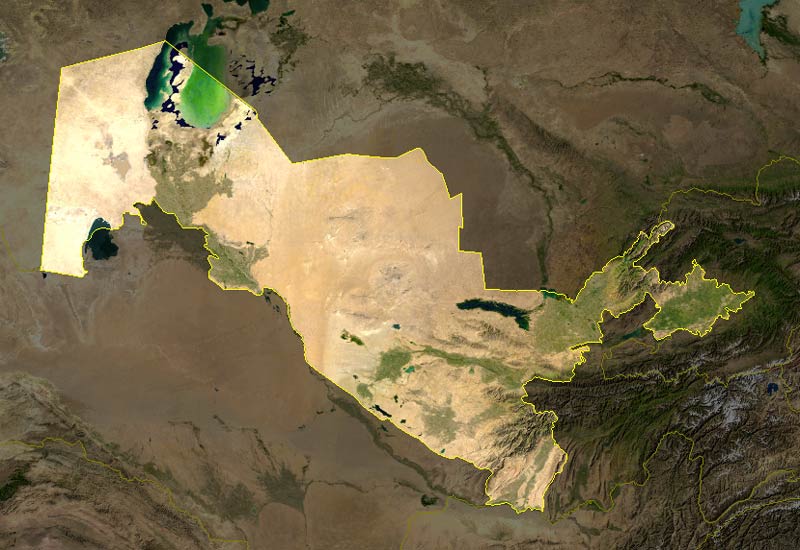1. Uzbekistan is home to the ancient city of Khiva, a UNESCO World Heritage Site known for its well-preserved city walls, historic mosques, and traditional bazaars, offering visitors a glimpse into its rich cultural heritage.
2. The Fergana Valley, located in eastern Uzbekistan, is known as one of the most fertile regions in Central Asia, producing a variety of crops including cotton, fruits, and vegetables, and contributing significantly to the country’s agricultural output.
3. Uzbekistan is home to some of the oldest cities in the world, including Samarkand, Bukhara, and Khiva, which have been centers of trade, culture, and scholarship for millennia.
4. The Registan Square in Samarkand is one of Uzbekistan’s most iconic landmarks, featuring three grand madrasahs adorned with intricate tilework, domes, and minarets, showcasing the region’s rich Islamic architecture.
5. Uzbekistan is renowned for its Silk Road heritage, with ancient trading routes connecting the East and West and fostering the exchange of goods, ideas, and cultures across Eurasia.
6. The Uzbek language, a Turkic language closely related to Uyghur and Kazakh, is the official language of Uzbekistan, spoken by the majority of the population.
7. The Aral Sea, once one of the world’s largest inland bodies of water, has shrunk dramatically due to Soviet-era irrigation projects, leaving behind vast expanses of dry, salt-crusted land and environmental devastation.
8. Uzbekistan is famous for its traditional crafts, including intricate silk weaving, colorful ceramics, and intricate wood carving, which are showcased in local markets and artisan workshops.
9. The ancient city of Bukhara is known as the “City of 1000 Minarets” for its numerous mosques, madrasahs, and minarets, which have adorned the city’s skyline for centuries.
10. Uzbekistan is a predominantly Muslim country, with Islam being the dominant religion practiced by the majority of the population, although religious freedom is enshrined in the country’s constitution.
11. The Uzbek cuisine is known for its rich flavors and diverse dishes, influenced by Persian, Turkish, and Russian culinary traditions, with staples such as pilaf, kebabs, and samsa (meat-filled pastries).
12. The Kyzylkum Desert, meaning “Red Sand” in Turkic, spans across Uzbekistan and neighboring countries, offering unique landscapes, desert flora, and opportunities for camel trekking and desert safaris.
13. Uzbekistan has a rich tradition of music and dance, with traditional instruments such as the dutar (two-stringed lute) and doira (frame drum) accompanying lively performances of folk dances such as the “Lazgi” and “Beshkak.”
14. The ancient city of Khiva, located along the historic Silk Road, is a UNESCO World Heritage Site known for its well-preserved mud-brick architecture, towering city walls, and bustling bazaars.
15. Uzbekistan’s economy is based primarily on agriculture, natural resources, and industry, with cotton production being a major contributor to the country’s economy and a source of employment for many rural communities.
16. The Chimgan Mountains, located near Tashkent, offer scenic landscapes, alpine meadows, and opportunities for outdoor activities such as hiking, skiing, and mountain biking.
17. Uzbekistan is home to a diverse array of ethnic groups, including Uzbeks, Tajiks, Russians, and Karakalpaks, each with their own language, culture, and traditions.
18. The Ulugh Beg Observatory, built in the 15th century in Samarkand, was one of the most advanced astronomical observatories of its time, showcasing the region’s historical contributions to science and astronomy.
19. Uzbekistan is known for its warm hospitality and tradition of chai-khana (tea houses), where locals and visitors gather to enjoy tea, conversation, and snacks such as dried fruits and nuts.
20. The Navoi Theater in Tashkent is one of Uzbekistan’s premier cultural institutions, hosting performances of opera, ballet, and theater, showcasing the country’s vibrant performing arts scene.
21. Uzbekistan has made significant strides in recent years to promote tourism and preserve its cultural heritage, with initiatives to restore historic sites, improve infrastructure, and promote sustainable tourism practices.
